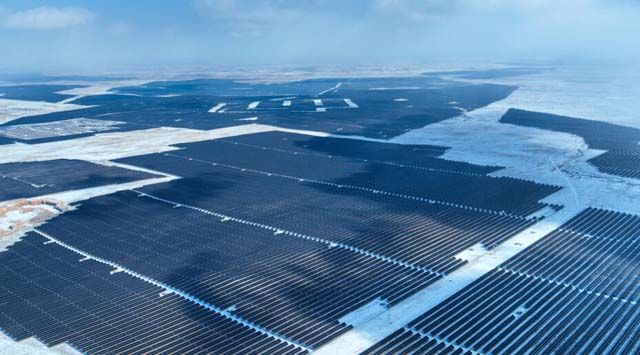News Flash
News Flash

BEIJING, July 11, 2024 (BSS/AFP) - China is building almost twice as much wind and solar energy capacity as every other country combined, research published Thursday showed.
The world's second-largest economy is the biggest emitter of the greenhouse gases that drive climate change.
China has committed to bring carbon emissions to a peak by 2030 and to net zero by 2060.
It has endured several waves of extreme weather in recent months that scientists say are rendered more severe by climate change.
China currently has a total of 339 gigawatts (GW) of capacity under construction, including 159 GW of wind and 180 GW of solar.
That is "nearly twice as much as the rest of the world combined", according to the study by Global Energy Monitor, a US-based NGO.
The figure far exceeds the second-ranked nation, the United States, which is building a total of just 40 GW, the report said.
It said China has broken ground on a third of new wind and solar capacity it has announced to date, compared to a global average of just seven percent.
"The stark contrast in construction rates illustrates the active nature of China's commitment to building renewables projects," the study said.
- 'Turning point?' -
Beijing's vast renewable energy buildout does have some drawbacks.
The national grid falls back on heavily polluting coal plants to deal with surges in power demand.
And it struggles to transmit renewable energy generated in remote northwestern regions to economic and population centres in the east.
However, China's combined wind and solar capacity is set to overtake coal this year, according to the report.
It said the rapid renewables expansion raises hopes that Beijing's carbon emissions will peak even sooner than expected.
In a separate report released on Thursday, the Centre for Research on Energy and Clean Air (CREA) found China issued no new permits for coal-based steelmaking projects in the first half of 2024.
CREA said that was the first time on a half-yearly basis that there have been no new permits since China announced its "dual carbon goals" in September 2020 -- a development hailed as a possible "turning point" by the independent research organisation.
"As China's steel demand peaks and more scrap becomes available, there is great potential to shift away from coal-based production, representing a significant opportunity for emissions reduction in the next 10 years," CREA's report said.
Scientists say global warming makes extreme weather more frequent and intense.
China has seen a summer blighted by searing heat in the north and torrential rain in the south.
Its weather agency last week forecast very high temperatures to persist in the coming weeks under the impact of climate change.
Heavy rains in the east and south have also triggered a string of deadly floods and landslides in recent weeks.